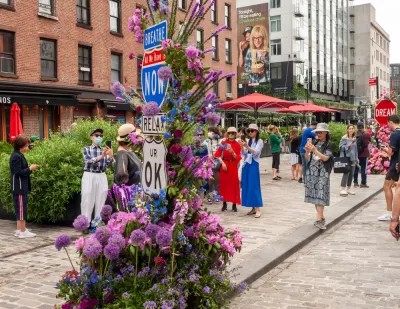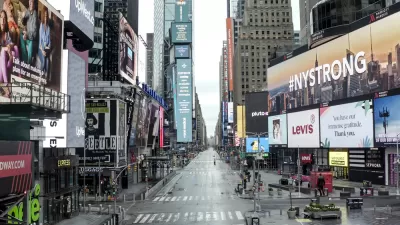As the new world order of working from home and vaccine hesitancy settles in, it's time to reevaluate assumptions from early in the pandemic about the effect of the public health on the economic health of large cities.

"Instead of wiping out big cities, remote work seems to be making them even bigger," according to an article by Hillary Hoffower.
Since the outset of the pandemic, predictions of the demise of urban centers have focused on two narratives. One argued that the spread of infection was connected to the population density of urban centers (the death rates in rural areas as compared to urban areas and skyrocketing cases in Alaska would seem to have dispelled that notion, once and for all). The other argued that working from home would gut the commercial spaces of cities—retail and office uses, both.
While the effects of social distancing, new reliance on delivery services, and no longer commuting into central businesses districts during working hours is having an undeniable effect, and certainly not all of it is for the better, Hoffower makes the case that "Citygoers' relationship with the office likely won't change that much, with a day or two working from home and three to four days in the office, and that means big cities won't wither away."
Hoffower cites an interview with Enrico Moretti, "the economist who (literally) wrote the book on superstar cities, published by Bloomberg Opinion in September, to make the case that superstar cities like New York and San Francisco are immune from the effects of the work from home trend.
There's also a growing body of evidence that "the narrative of mass migration bordered on exaggeration," according to Hoffower.
Stephan D. Whitaker, an analyst at the Federal Reserve Bank of Cleveland, said that while migration did increase in many urban neighborhoods, it hasn't been to the extent that would fit the definition of an exodus.
In fact, the urban exodus was more myth than reality, according to a Bank of America Research note from May, which anticipated an economic reopening would spark a return to superstar cities such as New York City and San Francisco "given their status as economic, financial, and cultural centers."
Direct evidence supports these claims. The United States Postal Service data showed that more Manhattanites moved to Brooklyn than anywhere else from March 2020 to February 2021 (hardly an urban exodus). "Zillow's 2021 Consumer Housing Trends Report showed that some changed neighborhoods or cities, 19% moved to a new city within their metro area, and nearly 40% stayed in the same city but switched neighborhoods," adds Hoffower.
The key to the redemption of superstar cities is in the new flexibility offered by working from home, according to the article.
FULL STORY: Remote work didn't wipe out big cities — it made them even bigger

Planetizen Federal Action Tracker
A weekly monitor of how Trump’s orders and actions are impacting planners and planning in America.

Map: Where Senate Republicans Want to Sell Your Public Lands
For public land advocates, the Senate Republicans’ proposal to sell millions of acres of public land in the West is “the biggest fight of their careers.”

Restaurant Patios Were a Pandemic Win — Why Were They so Hard to Keep?
Social distancing requirements and changes in travel patterns prompted cities to pilot new uses for street and sidewalk space. Then it got complicated.

Platform Pilsner: Vancouver Transit Agency Releases... a Beer?
TransLink will receive a portion of every sale of the four-pack.

Toronto Weighs Cheaper Transit, Parking Hikes for Major Events
Special event rates would take effect during large festivals, sports games and concerts to ‘discourage driving, manage congestion and free up space for transit.”

Berlin to Consider Car-Free Zone Larger Than Manhattan
The area bound by the 22-mile Ringbahn would still allow 12 uses of a private automobile per year per person, and several other exemptions.
Urban Design for Planners 1: Software Tools
This six-course series explores essential urban design concepts using open source software and equips planners with the tools they need to participate fully in the urban design process.
Planning for Universal Design
Learn the tools for implementing Universal Design in planning regulations.
Heyer Gruel & Associates PA
JM Goldson LLC
Custer County Colorado
City of Camden Redevelopment Agency
City of Astoria
Transportation Research & Education Center (TREC) at Portland State University
Camden Redevelopment Agency
City of Claremont
Municipality of Princeton (NJ)





























